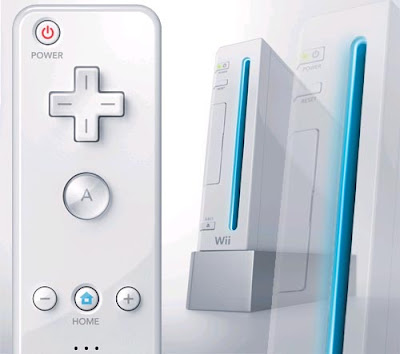

The 3DS
By now, you will have read most details about the Nintendo 3DS, Nintendo's return to 3D gaming after the failed Virtual Boy.
Since I am late to the party, reporting about this, I will concentrate on a few interesting details and aspects that have not been widely reported. First of all, the technology used is called a parallax barrier and will likely be provided by Sharp. You will find a pretty good description of this over on The Register.
Parallax barrier
I have used this tech before, in the form of a third party screen available for the iPhone. The results were very disappointing. However, a German exhibitor at this years's Game Developers Conference, which I attended, showed such a screen for a big monitor and the 3D visuals were pretty amazing. The only drawback was that you had to find a good position to perceive the effect from and stay put. In discussions over the last few days - including Nintendo employees - everyone agreed that Nintendo would only bring technology to market if it was perfected.
My chat with Miyamoto
Now, onto the timing. Some analysts suspect that Nintendo issued the news to prevent a news leak. Ironically, only days before the reveal, I was among a few lucky journalists who were able to interview Shigeru Miyamoto in London, ahead of his BAFTA award. And regarding a Wii successor, I asked him how Nintendo would try to innovate again, after being copied by both competitors. I suggested that 3D technology was the only route available. His answer was that while he could not talk about a Wii successor, I should wait for E3.
In fact, Miyamoto hyped E3 so much, that the official 3DS unveiling will most likely not be the main news at their press conference. There are a number of reasons. Of course, the timing and form of Nintendo's 3DS announcement appeared rushed. There are no images accompanying the news and the timing could cannibalise the launch of the DSi XL. But while most Nintendo employees I talk to were totally surprised about the hardware as well as the announcement, key people in all major territories knew that new hardware was coming. They may have been surprised at the 3D aspect. But they had been given advance warnings of such a revelation. In fact, a few have claimed that we can expect more. This must be why Nintendo blew the lid on the 3DS early. Because they will announce something far bigger at E3.
PlayStation Move update
Finally, just a quick note on PlayStation Move. My dear colleague Valentina posted a link on her blog (German) to the latest Engadget Show. In it (43:45 into the show), a number of videos illustrate the origin of PlayStation Move technology.
You may remember me writing about playing with early PlayStation Movbe tech back at the ECTS 2001. What you see in the video, labeled as 2004, is precisely what they publically showed three years prior to that. Lord knows why they do not give the correct date.


